Male City Is the Capital of Maldives – Your Indian Traveller’s Guide
Overview of Male City, Maldives
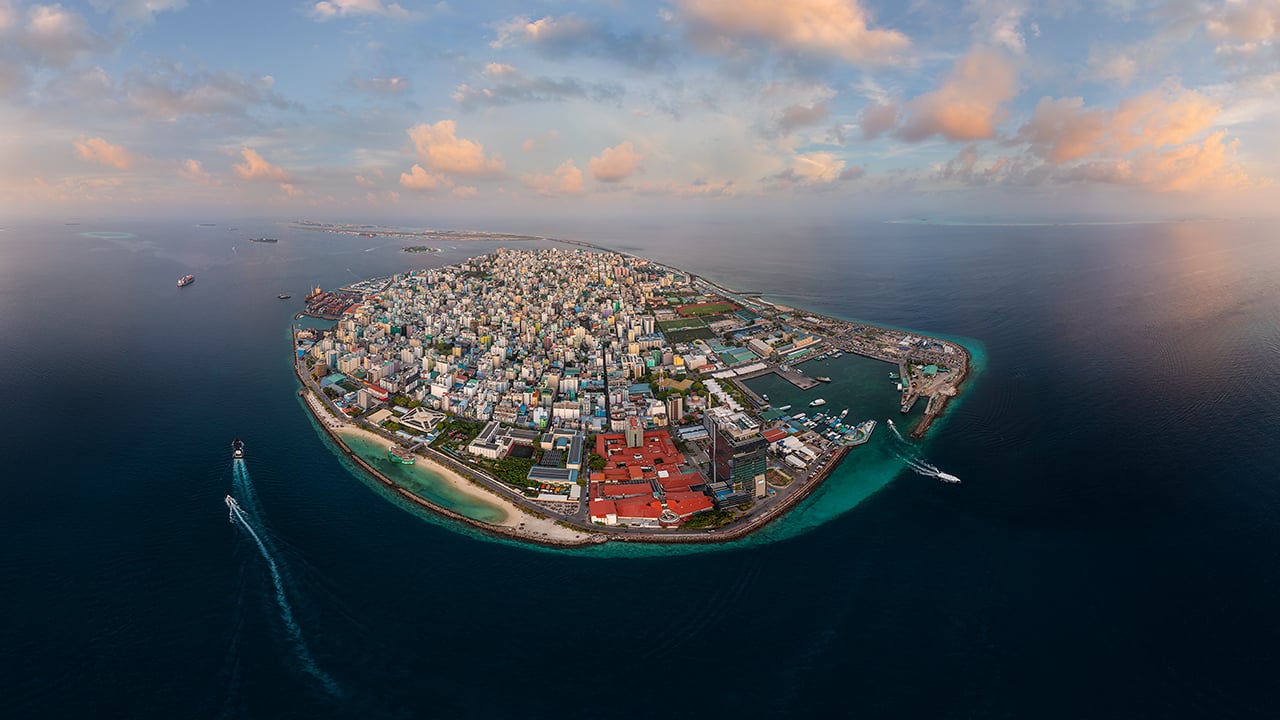
Male City, the vibrant capital of the Maldives, lies on a small yet densely populated island that serves as the nation’s political, cultural, and economic heart. Although Male island is geographically located within Kaafu Atoll, it functions independently as an administrative region. The city expands beyond its main island, connecting to five nearby islets — Hulhulé, Hulhumalé, Vilimalé, Gulhifalhu, and Thilafushi — forming a growing metropolitan hub.
The central island is almost entirely urbanized, with colorful buildings, narrow streets, and a busy commercial harbor that drives much of the Maldives’ trade and tourism. Home to nearly one-third of the country’s population, Male has evolved from a quiet fishing village into a modern city with over 350,000 residents today. Despite its compact size, it remains the beating heart of Male Maldives, where tradition meets progress in every lane.
History and Culture of Male City
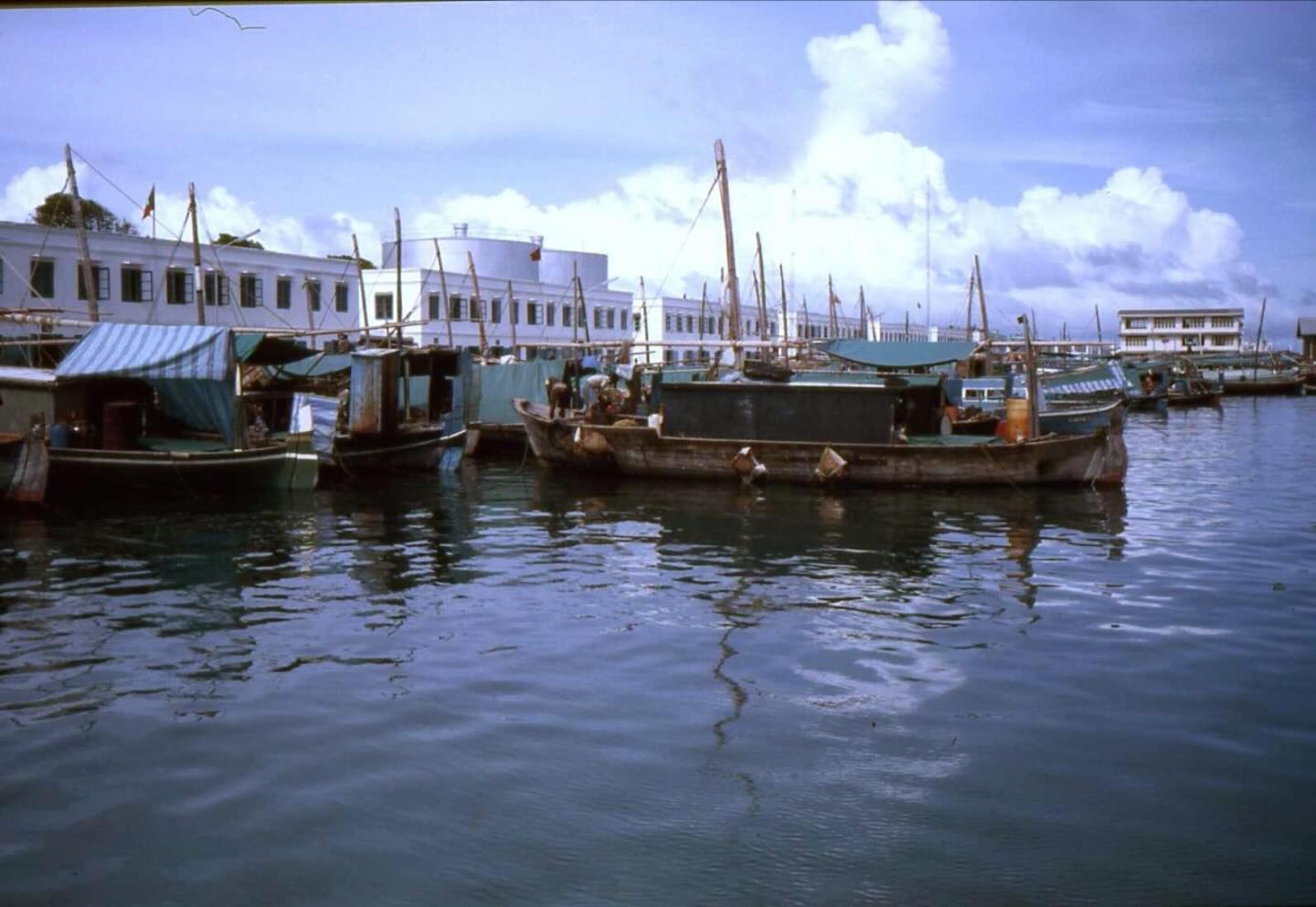
The history of Male Maldives stretches back more than 800 years, deeply rooted in royal heritage and seafaring traditions. Once ruled by ancient dynasties, Male was the seat of Maldivian kings and sultans before transforming into the modern republic’s capital. You can still feel the echoes of its past in landmarks like the Old Friday Mosque (Hukuru Miskiy), built from coral stone and adorned with intricate carvings — a must-visit for anyone exploring the island.
The city’s culture beautifully blends Islamic values, South Asian influences, and a relaxed island lifestyle. Locals are warm, modest, and proud of their heritage. Festivals, traditional music, and Bodu Beru drum performances bring life to its evenings. Wandering through Male City Maldives gives visitors a glimpse of both history and hospitality, wrapped in the gentle rhythm of island life.
People and Community of Malé City, Maldives
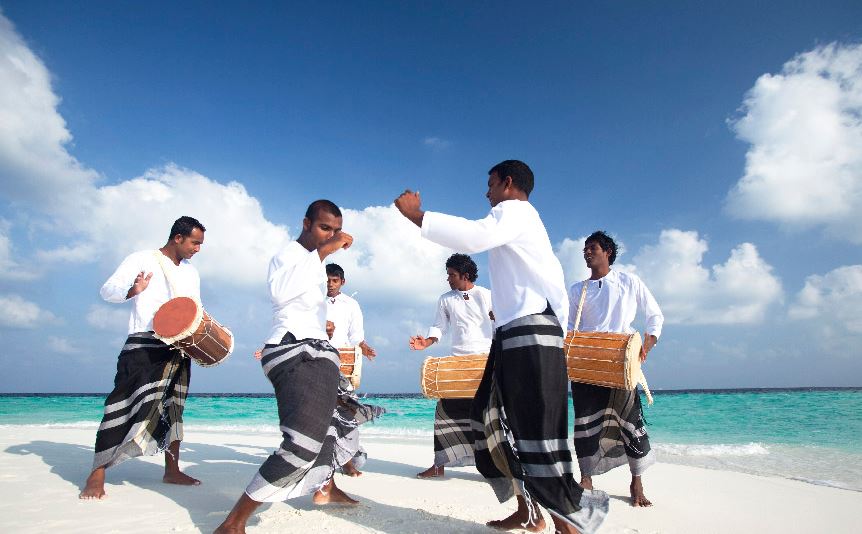
The population of Malé City, Maldives, reflects the country’s rich cultural evolution shaped by centuries of migration, trade, and interaction. The people of the Maldives are primarily Maldivians, descendants of diverse ethnic groups who settled across the islands over thousands of years. The earliest inhabitants are believed to have come from the southern coasts of India and Sri Lanka, particularly Tamil and Sinhalese settlers, who laid the foundation of the island’s early communities. Over time, Arab traders, Africans, Malays, and Indonesians influenced the islands through trade and cultural exchange, leaving behind traces in language, cuisine, and traditions.
The official language, Dhivehi, belongs to the Indo-Aryan family and carries influences from Arabic, Hindi, and even Portuguese due to centuries of contact. Islam is the official and only religion of the Maldives, deeply woven into everyday life and governance. Most residents of Malé speak English fluently, making it easy for travelers to communicate. The blend of ancient traditions with modern urban life creates a society that values hospitality, faith, and family above all. Despite being one of the world’s most densely populated capitals, the people of Malé continue to preserve their strong cultural identity with pride and warmth.
Climate and Weather In Male Maldives
The climate of Malé City, Maldives, is tropical and maritime, offering warm, sunny weather throughout the year. The city experiences two main seasons influenced by the monsoons — the northeast monsoon (Iruvai) from November to April and the southwest monsoon (Hulhangu) from May to October. During the dry season, skies remain clear, humidity is moderate, and seas are calm, making it the best time to visit Malé Maldives for sightseeing, diving, and island hopping.
Temperatures stay fairly consistent year-round, averaging between 26°C and 32°C. Evenings are cooler due to the ocean breeze, offering perfect conditions for strolls along the waterfront or exploring the local markets. The wet season brings short but heavy tropical showers, usually followed by sunshine.
Top Attractions & Landmarks in Male Maldives
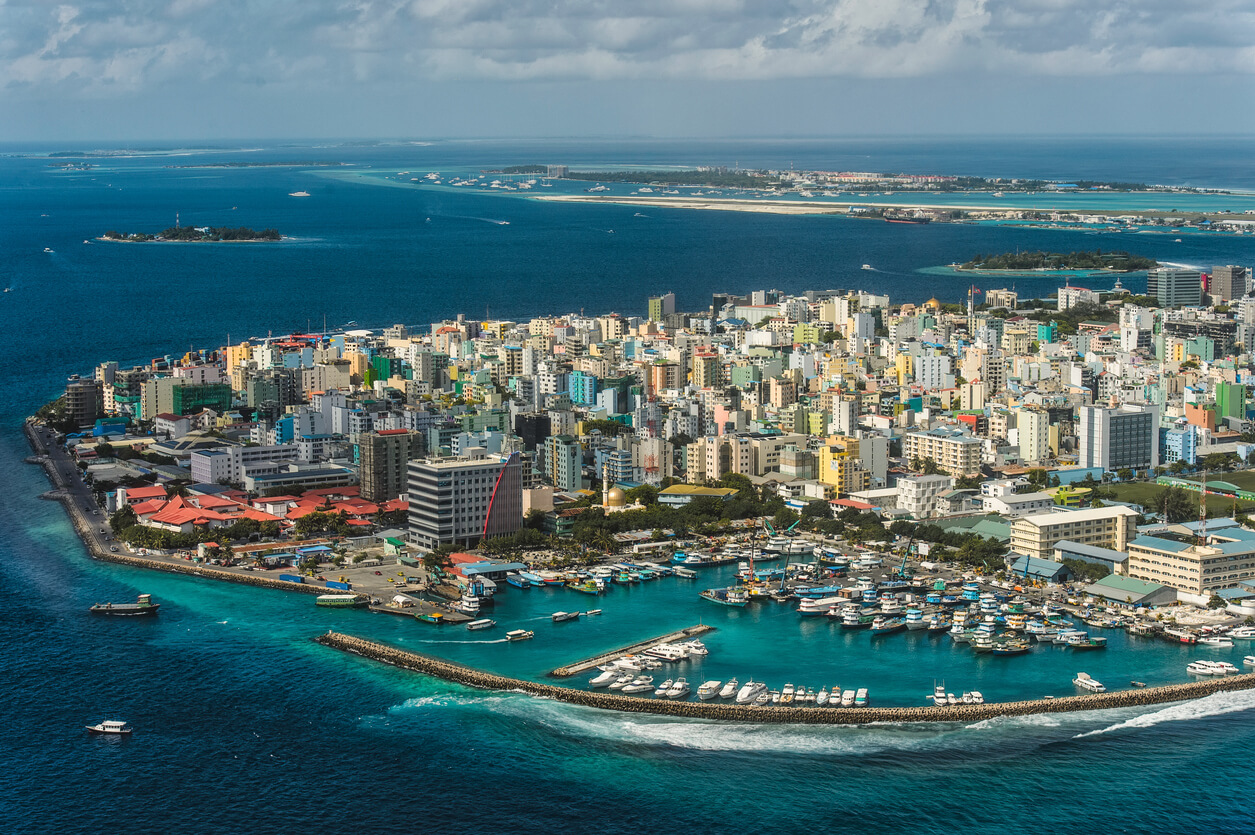
Despite being one of the world’s smallest capitals, Male Maldives offers a remarkable mix of culture, architecture, and seaside charm. Every landmark here tells a story — from ancient mosques and museums to bustling markets and oceanfront parks. Exploring these spots gives travelers a real taste of local life beyond resort luxury. Whether you’re on a short Male City Tour or a full-day exploration, each site offers unique insights into the Maldives’ history, religion, and community spirit. Here are some of the most iconic places to visit in Male Maldives that shouldn’t be missed.
1. Grand Friday Mosque and Hukuru Miskiy (Old Friday Mosque)
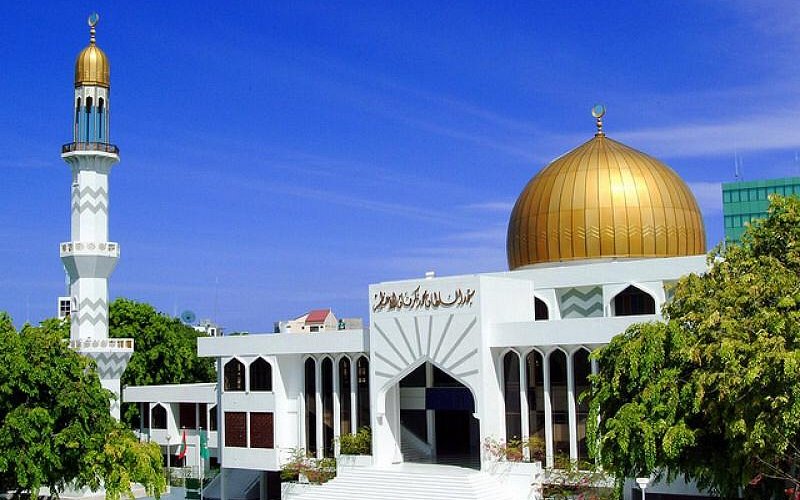
The Grand Friday Mosque and Hukuru Miskiy together form the spiritual and architectural heart of Male Maldives. The Grand Friday Mosque, part of the Islamic Centre, is the largest mosque in the country and a defining landmark with its gleaming golden dome and white marble façade. It can accommodate over 5,000 worshippers and features exquisite Arabic calligraphy, making it a must-see for travelers interested in culture and design. Just a short walk away stands Hukuru Miskiy, the oldest mosque in the Maldives, built in 1658 from hand-carved coral stones. Its intricate carvings, wooden interiors, and lacquered panels represent the height of Maldivian craftsmanship. Recognized as a UNESCO Tentative Heritage Site, Hukuru Miskiy offers a glimpse into the deep Islamic traditions that have shaped the islands for centuries. Visiting both sites provides an inspiring connection between the Maldives’ ancient faith and its modern identity.
2. Henveiru Beach
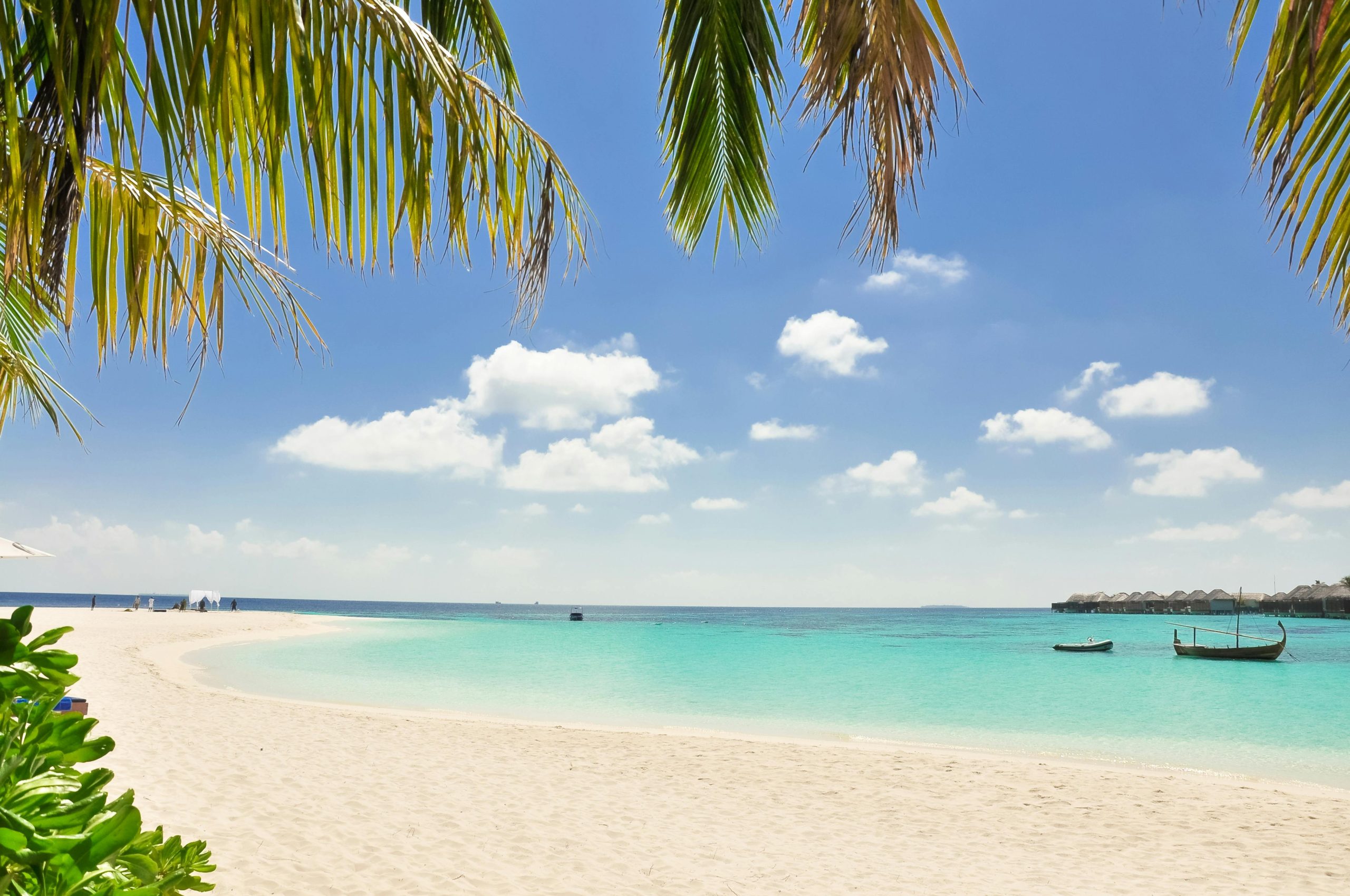
Located on the eastern side of Male City Maldives, Henveiru Beach is a peaceful waterfront spot known for its scenic views and local charm. While not as large or secluded as the resort beaches, it’s one of the few natural coastlines within the capital where locals gather to relax after work or enjoy evening walks. The beach is lined with benches, small cafés, and shaded spots where you can unwind while watching the turquoise waters shimmer under the sun. During weekends, it becomes a lively hangout for families and youngsters, offering an authentic glimpse into Maldivian urban life. The nearby swimming area is safe and clean, ideal for a quick dip or a quiet escape from the city’s buzz. Henveiru Beach beautifully captures how Male Maldives balances modern city living with the tranquil rhythm of island life.
3. Sinamalé Bridge (China–Maldives Friendship Bridge)
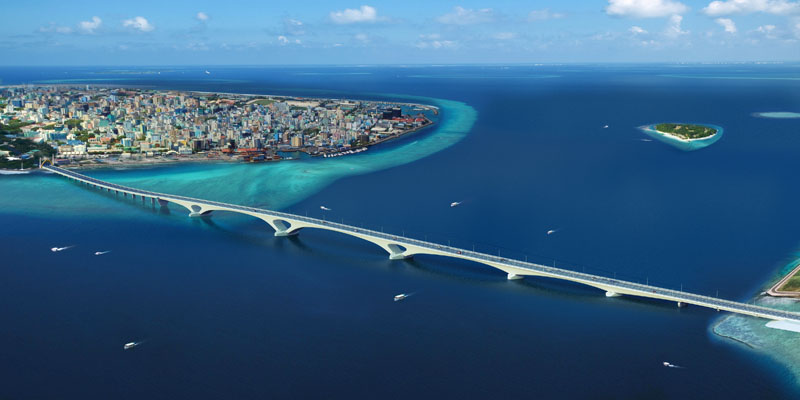
The Sinamalé Bridge, often called the China–Maldives Friendship Bridge, stands as a proud symbol of connection and progress in Male Maldives. Opened in 2018, the bridge links the capital island of Male with Hulhulé Island (home to Velana International Airport) and Hulhumalé, the newly developed residential island. Stretching over 2 kilometers across the turquoise Indian Ocean, the bridge has made commuting between the islands faster and safer, revolutionizing local travel. Walking or driving across it offers a stunning panoramic view of the surrounding atolls, especially at sunrise or sunset. It’s not just an infrastructure marvel but also a popular photography spot among tourists. The Sinamalé Bridge perfectly represents the Maldives’ transformation from a traditional island nation to a forward-looking global destination, blending beauty, engineering, and vision in one breathtaking experience.
4. Victory Monument
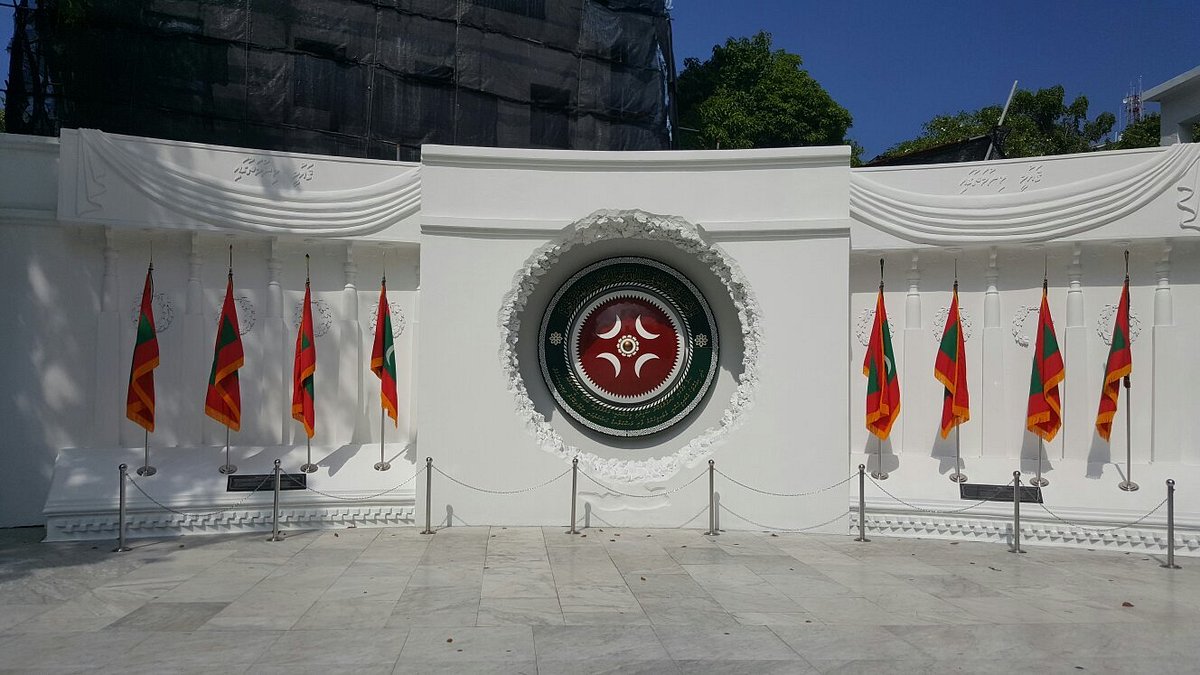
The Victory Monument in Male City Maldives holds deep historical significance as a tribute to the Maldives’ resilience. It was built to commemorate the nation’s victory over the 1988 attempted coup, when a group of mercenaries tried to overthrow the government. The monument stands tall near the center of the city, surrounded by beautifully maintained gardens and open spaces. Its clean lines and minimalist design symbolize unity, strength, and the spirit of independence. Visitors often stop here during a Male City Tour to understand the country’s modern political history. The area around the monument is peaceful and ideal for short walks or photography, especially in the evening when it’s lit up. For those keen to grasp the Maldives beyond its beaches, the Victory Monument is a powerful reminder of national pride and perseverance.
5. Tsunami Monument
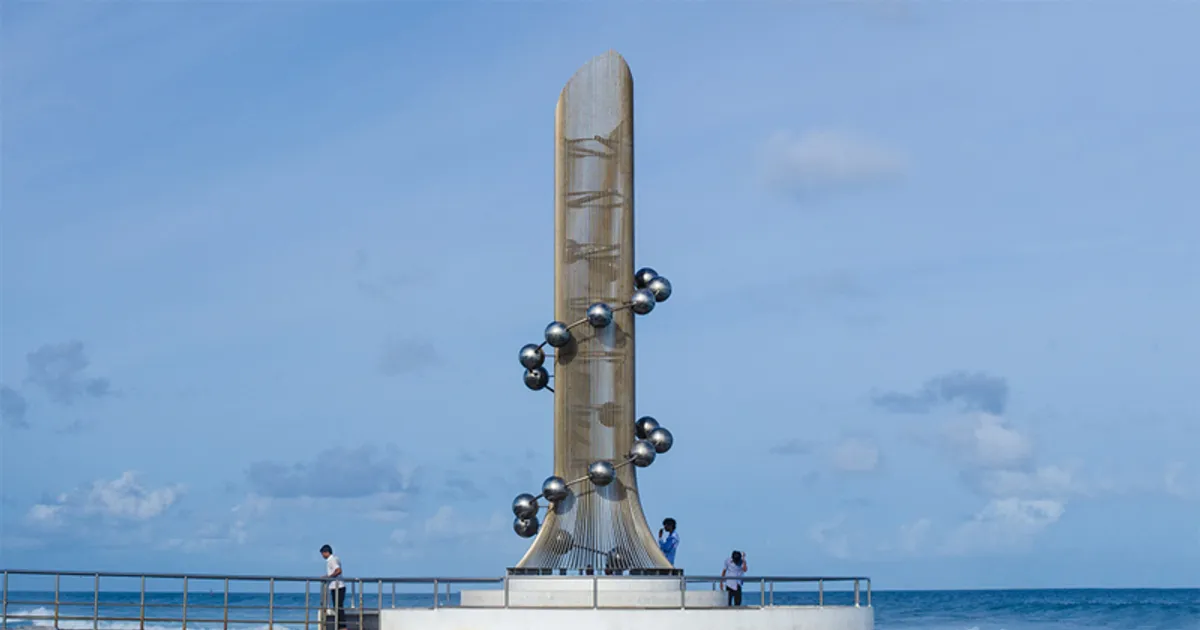
The Tsunami Monument is one of the most moving landmarks in Male Maldives, built to honor the victims of the 2004 Indian Ocean tsunami that devastated several parts of the country. Located on the southern seafront of the city, the monument stands gracefully by the ocean, featuring a stainless-steel structure symbolizing the waves of the sea. Each ring on the design represents a life lost during the disaster, making it both a place of remembrance and reflection. Surrounded by quiet walkways and sea views, it’s a serene spot often visited during sunset. The nearby area also has cafés and seating zones where visitors can rest and enjoy the view. Visiting the Tsunami Monument is an emotional yet meaningful experience that highlights the Maldivian people’s strength and their deep connection to the sea.
6. Male Fish Market and Local Market
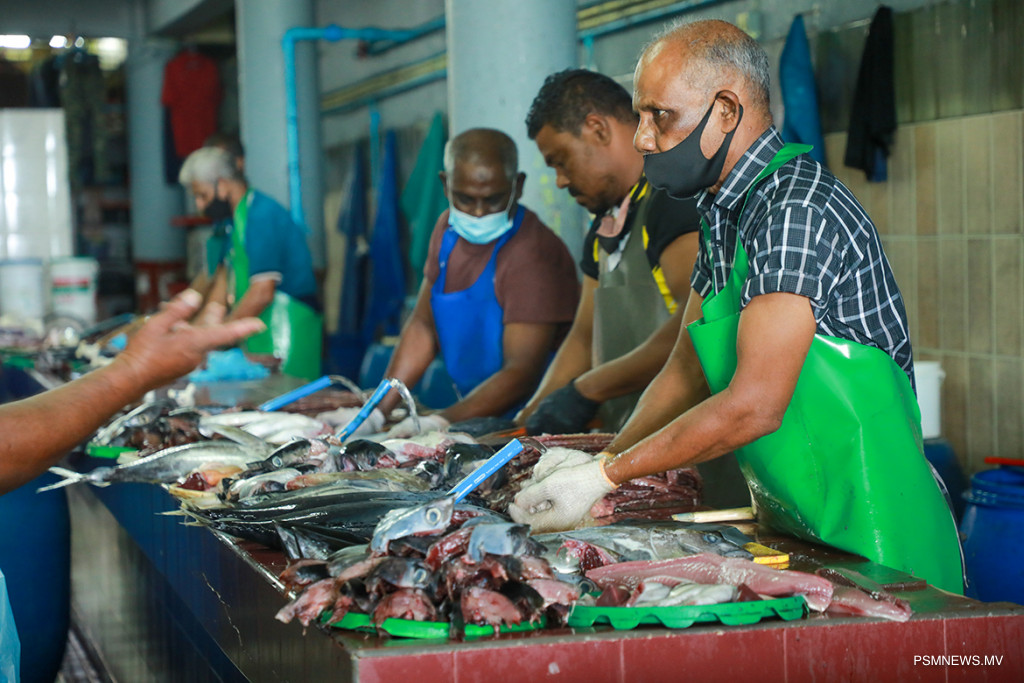
At the heart of Male Maldives lies the bustling Fish Market and Local Market, offering a raw and colorful glimpse into daily island life. The Fish Market is a hive of activity from early morning, where fishermen unload freshly caught tuna, reef fish, and skipjack directly from their boats.
The smell of the sea and the energy of bargaining locals make it an unforgettable sensory experience. A short walk away, the Local Market is filled with vibrant stalls selling tropical fruits, coconuts, dried fish, and handmade snacks like bondi (sweet rolls). It’s a perfect place to taste local flavors, meet friendly vendors, and shop for authentic souvenirs. For travelers who love exploring local culture, the Male Fish and Local Market is one of the most essential stops on any Male City Tour, offering both authenticity and charm in abundance.
7. National Museum
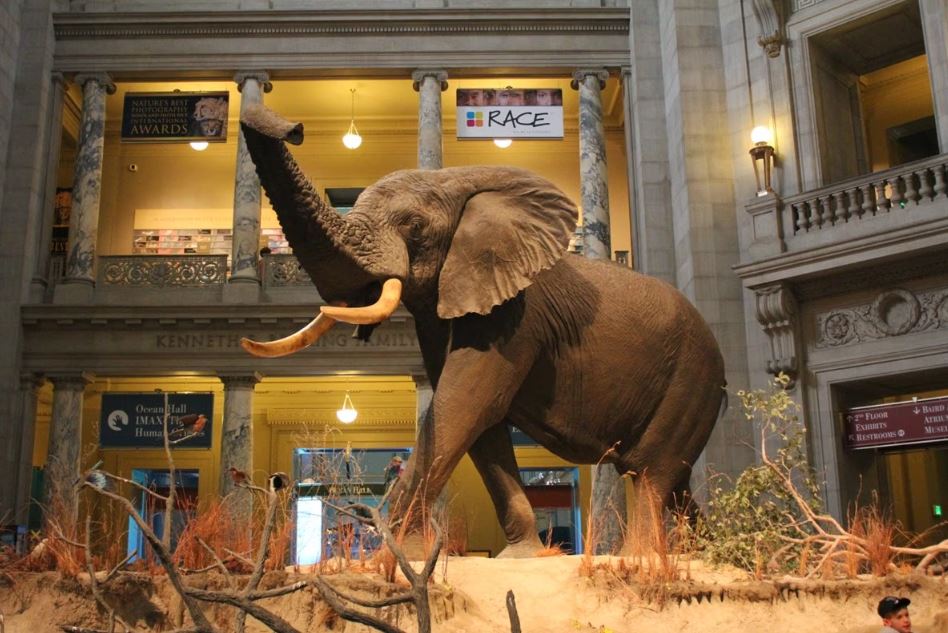
Located within Sultan Park, the National Museum of Maldives is a treasure trove of history and heritage. It houses artifacts that tell the story of the nation’s transformation from a Buddhist kingdom to an Islamic republic. The museum’s collection includes royal thrones, ancient scripts, weaponry, jewelry, and costumes from the Sultanate era. One of its most fascinating sections displays coral stone sculptures from pre-Islamic temples, shedding light on the Maldives’ early civilization. Managed by the Ministry of Arts, Culture, and Heritage, the museum is well-organized and air-conditioned, providing a comfortable visit. It’s an ideal stop for travelers who want to understand the Maldives beyond its beaches. Spending an hour or two here offers valuable insight into how this island nation preserved its culture while embracing modernity — a true highlight of Male Maldives.
8. Rasrani Bageecha (Park) & Winter Park
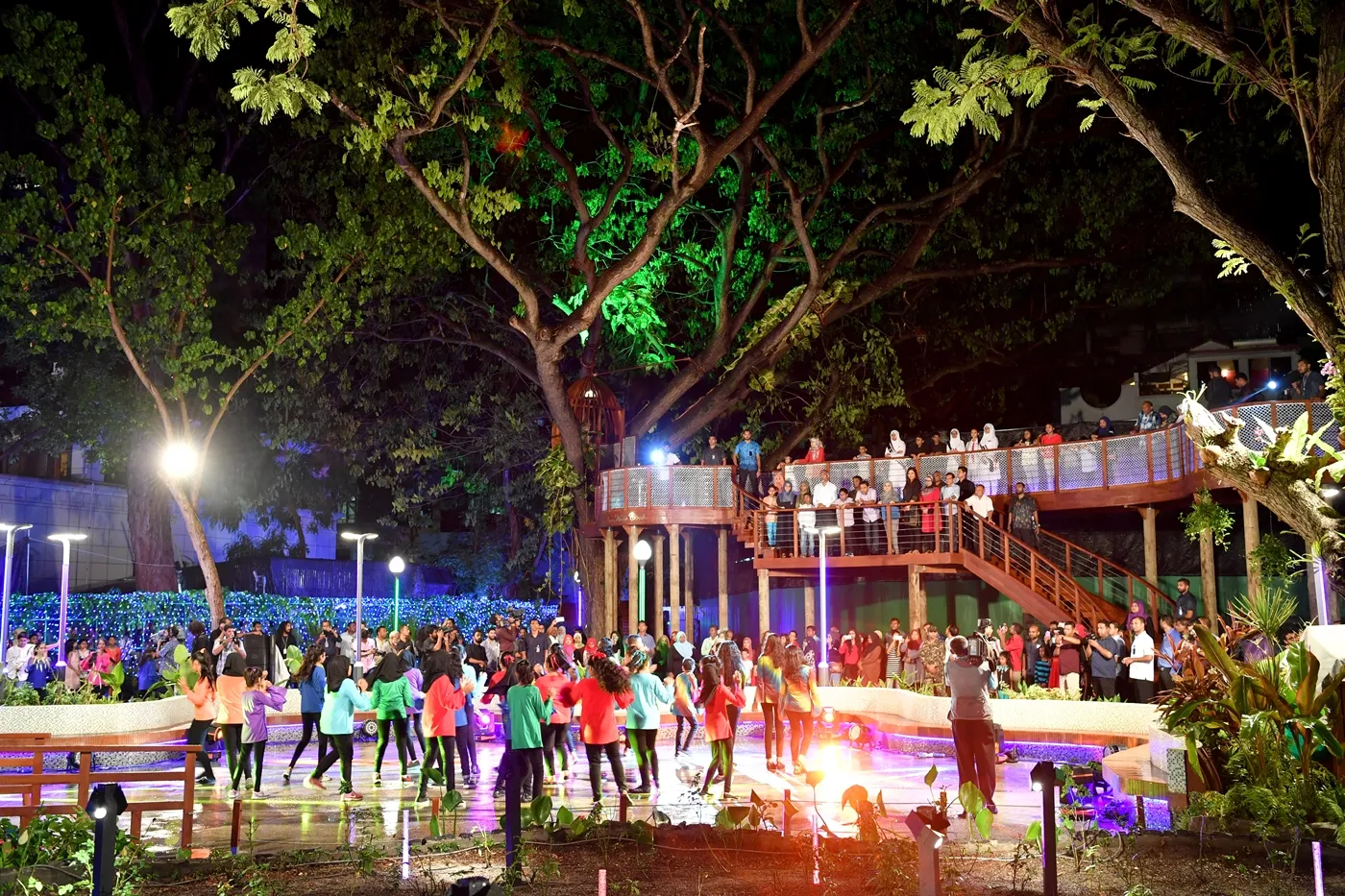
Rasrani Bageecha, formerly known as Sultan Park, is one of the most peaceful public spaces in Male City Maldives. Once part of the royal palace complex, it has been beautifully landscaped into a green retreat with fountains, shaded benches, and walking paths. The park’s lush greenery and calm atmosphere make it perfect for family outings or quiet breaks from sightseeing. A newer addition nearby, Winter Park, offers a playful environment for children with modern recreational areas and soft lighting for evening strolls. Both parks reflect the growing focus on community spaces within the busy city. Whether you’re reading under the trees, enjoying local snacks, or simply people-watching, these parks show a softer, greener side of the capital — a balance between urban energy and island serenity.
Things to Do in Malé City, Maldives
Life in Male Maldives moves to an island rhythm — lively, cultural, and full of everyday charm. The city offers plenty of ways to experience local life, from exploring street markets and tasting Maldivian flavors to relaxing by the ocean and discovering nearby islands. It’s a place where tradition meets modern energy, giving visitors a true glimpse of the Maldives beyond its luxury resorts. The following are some of the most enjoyable things to do in Male City during your visit.
1. Take a Guided Malé City Tour
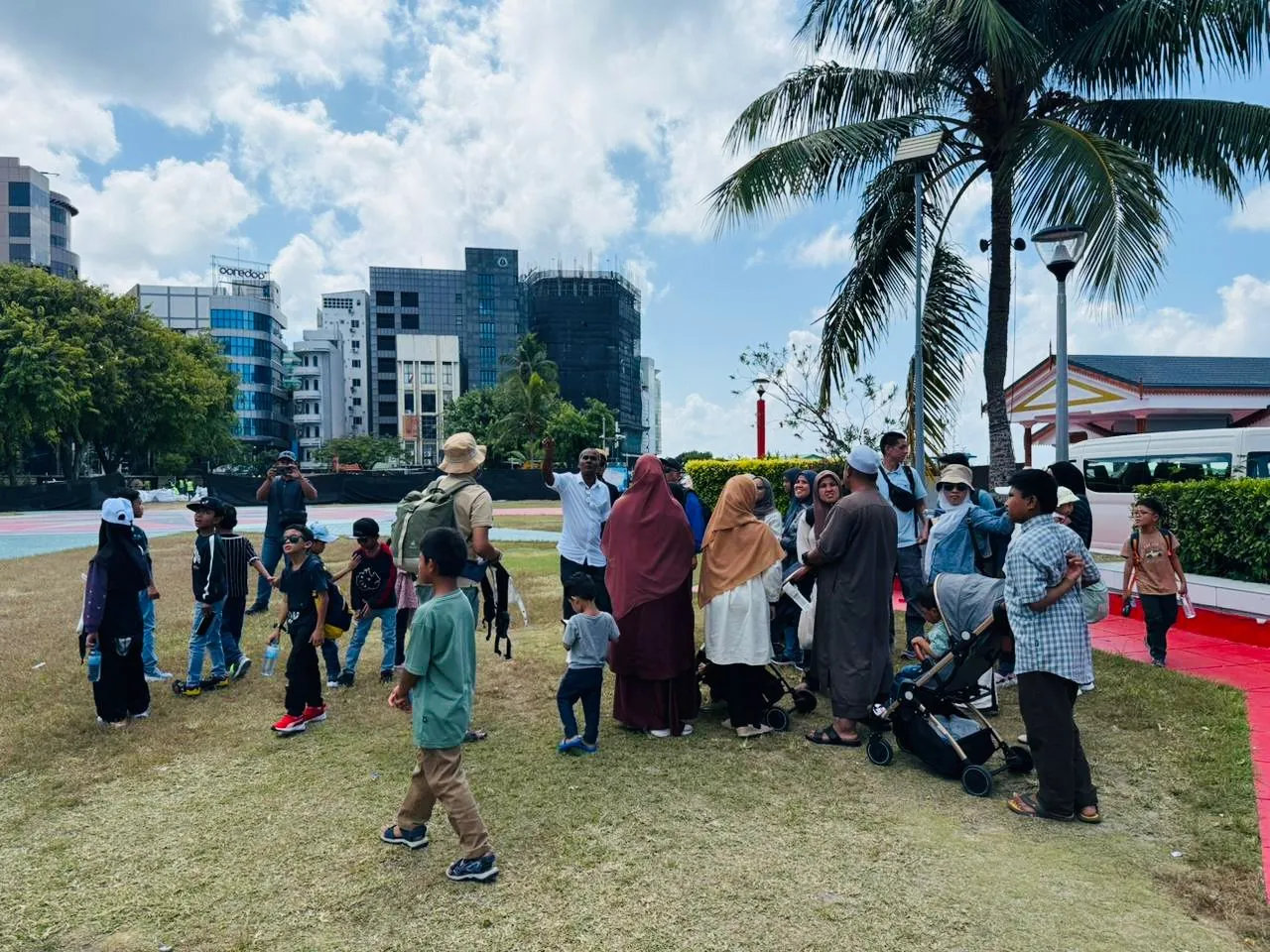
A Malé City Tour is the perfect way to explore the capital’s heritage and modern life. Guided tours usually include visits to key landmarks like the Grand Friday Mosque, local parks, markets, and government buildings. You’ll learn about the city’s history, Islamic influence, and the evolution of urban Maldives. The local guides also share cultural insights that help you connect with the community on a personal level.
Highlights:
- Explore key landmarks with local guides
- Learn about Maldivian history and traditions
- Great for first-time visitors to get oriented
- Available as half-day or full-day tours
2. Experience the Local and Fish Market
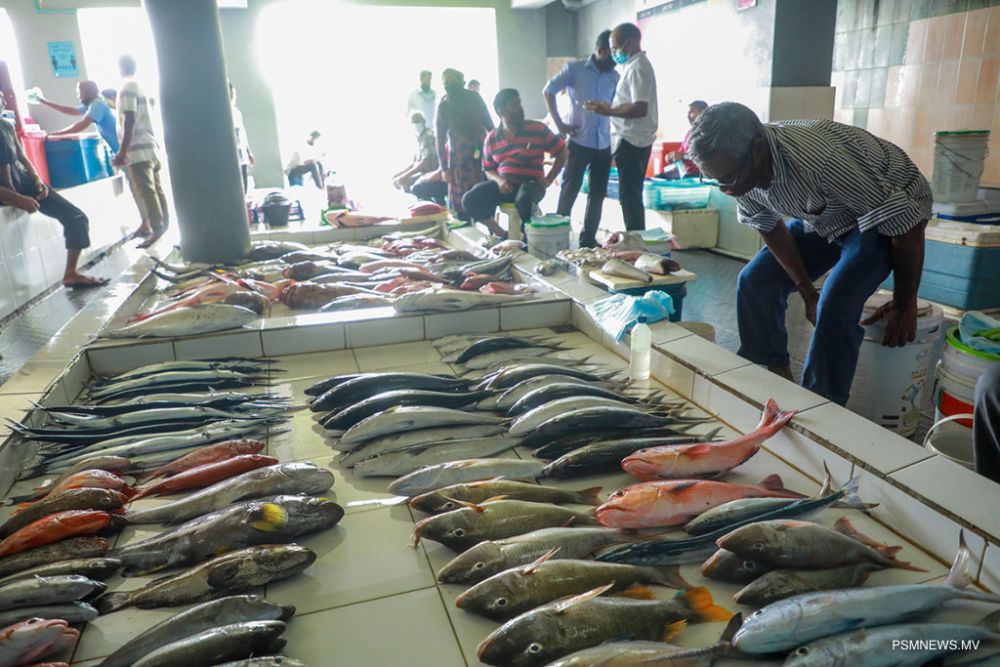
The Local Market and Fish Market are the beating heart of Malé. Here, fishermen unload their fresh catches, vendors sell tropical fruits, coconuts, and local snacks, and the air fills with the scent of the ocean and spices. The lively chaos offers a raw and real taste of Maldivian daily life. Don’t miss trying bondi (sweet coconut rolls) or capturing the colorful displays for great photos.
Highlights:
- Fresh seafood and island produce
- Best place to experience local life
- Try Maldivian snacks and fruits
- Perfect for photography and cultural immersion
3. Enjoy Sunset at Henveiru Beach
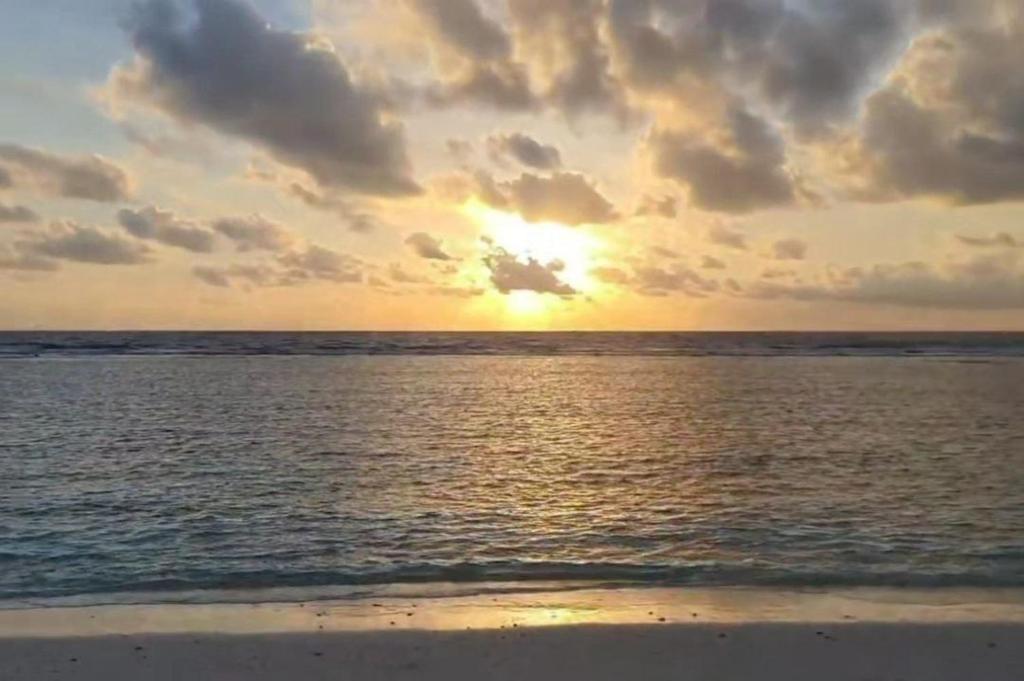
Henveiru Beach is one of the few public beaches in Malé where locals and tourists gather to relax. The calm turquoise waters and gentle sea breeze make it an ideal spot to unwind after a day of sightseeing. Watching the sunset paint the sky in shades of orange and pink is an experience you won’t forget. It’s a peaceful escape right within the busy city.
Highlights:
- Stunning oceanfront sunset views
- Relaxed, family-friendly beach atmosphere
- Close to cafés and snack kiosks
- Great for evening walks and photography
4. Taste Authentic Maldivian Cuisine
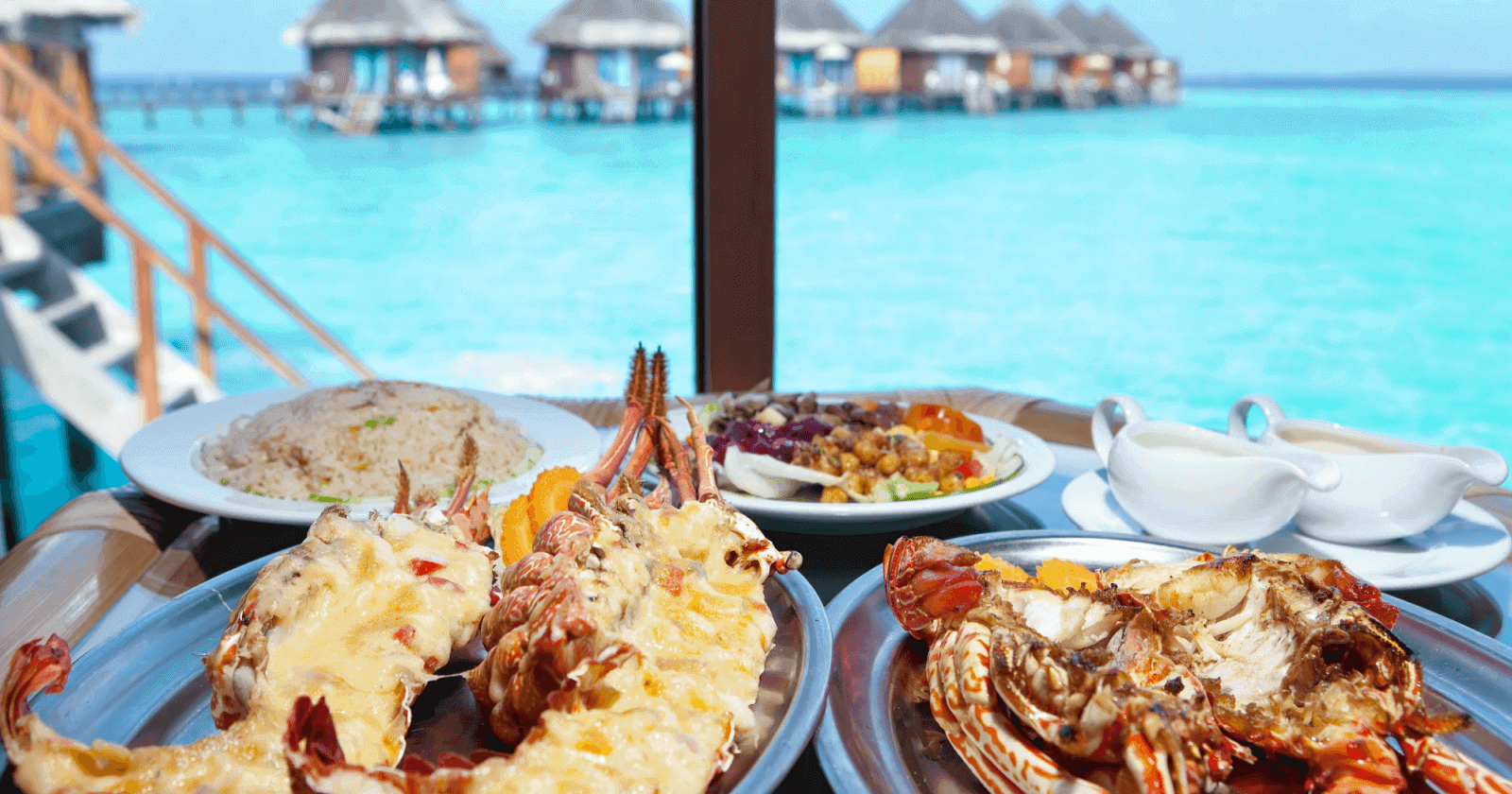
Malé is the best place to sample Maldivian cuisine, which blends flavors from India, Sri Lanka, and the Middle East. Try dishes like Mas Huni (tuna with coconut and chili), Garudhiya (fish soup served with rice), and Fihunu Mas (grilled fish). The local cafés, known as hotaa, serve simple yet delicious meals, while seafront restaurants offer international fusion menus.
Highlights:
- Try authentic local dishes and seafood
- Experience both street food and fine dining
- Flavors inspired by Indian Ocean cultures
- Vegetarian and seafood options available
5. Take a Short Ferry Ride to Nearby Islands
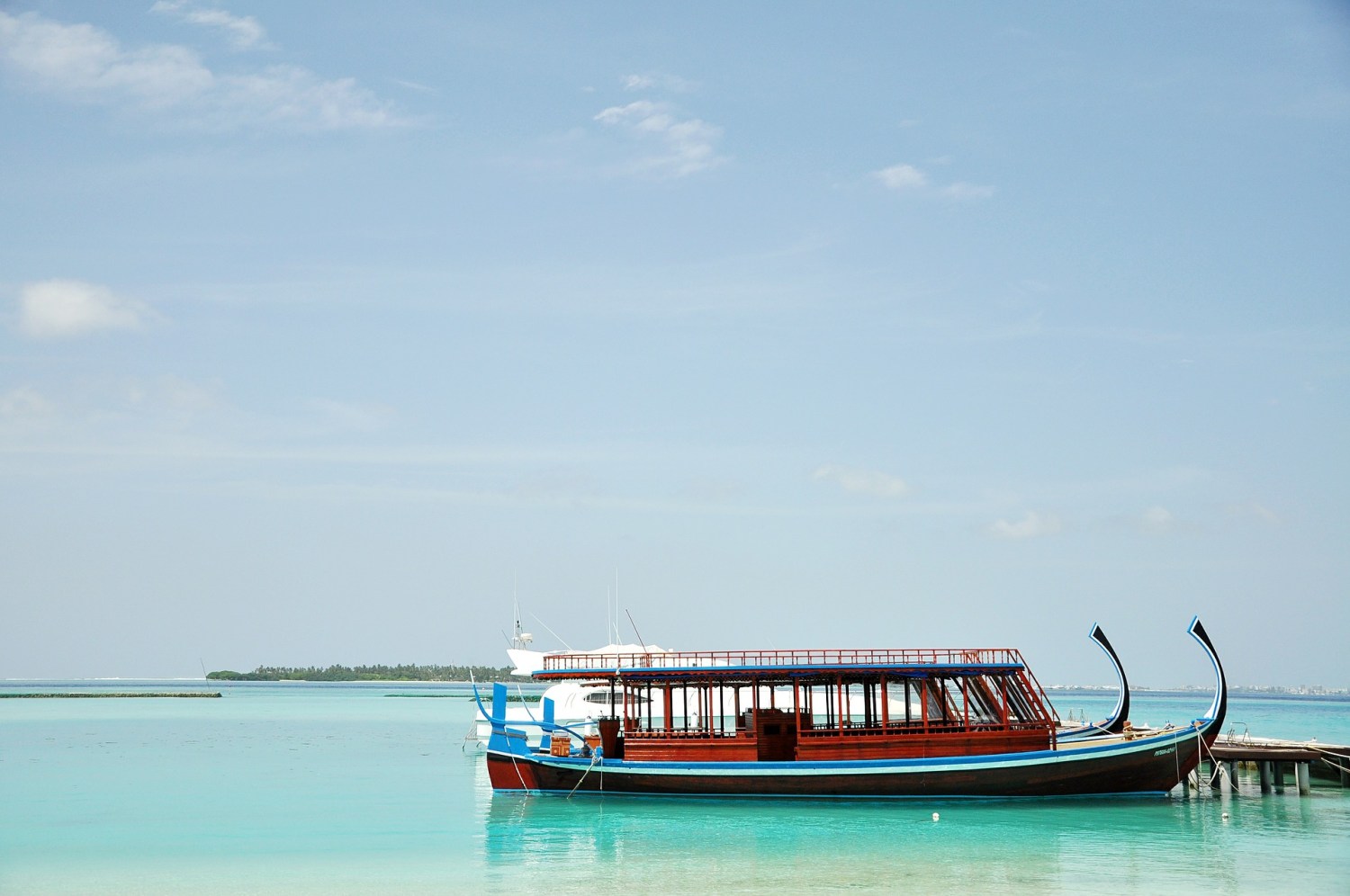
If you want to escape the city buzz for a while, hop on a ferry to Hulhumalé or Vilimalé, both just minutes away. Hulhumalé is known for its modern vibe, long beach, and cafés, while Vilimalé offers a slower, more traditional island feel. These short rides let you experience the diversity of Maldivian life — from urban to tranquil — all within reach of the capital.
Highlights:
- Quick and affordable island-hopping option
- Explore nearby beaches and cafés
- Perfect for day trips from Malé
- Offers a glimpse of different island lifestyles
6. Shop for Souvenirs and Handicrafts
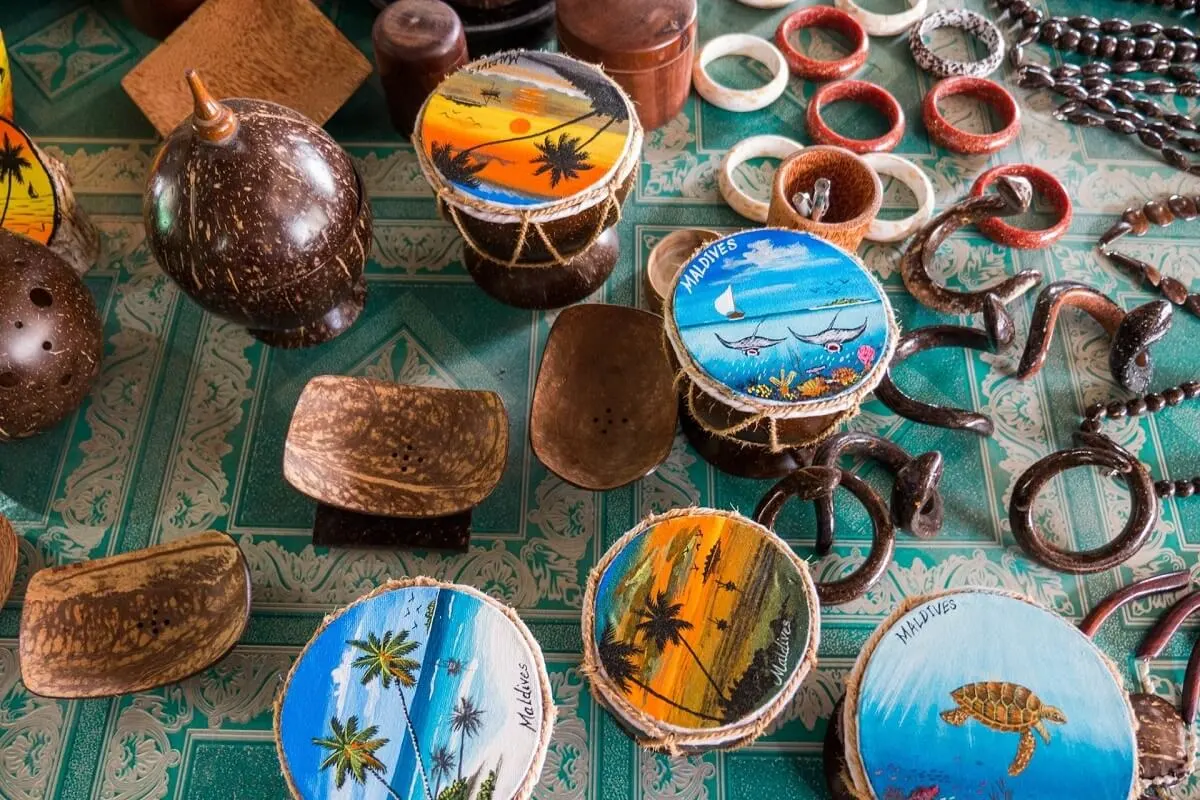
Before leaving, spend time shopping for Maldivian souvenirs at local craft stores and small boutiques. You’ll find handwoven mats, lacquered wooden boxes, seashell jewelry, and coconut-based products. Buying directly from local artisans supports small businesses and gives you a genuine keepsake from your trip.
Highlights:
- Authentic local handicrafts and souvenirs
- Great for supporting Maldivian artisans
- Affordable and handmade items
- Perfect gifts to take home
Local Food & Cafés in Malé
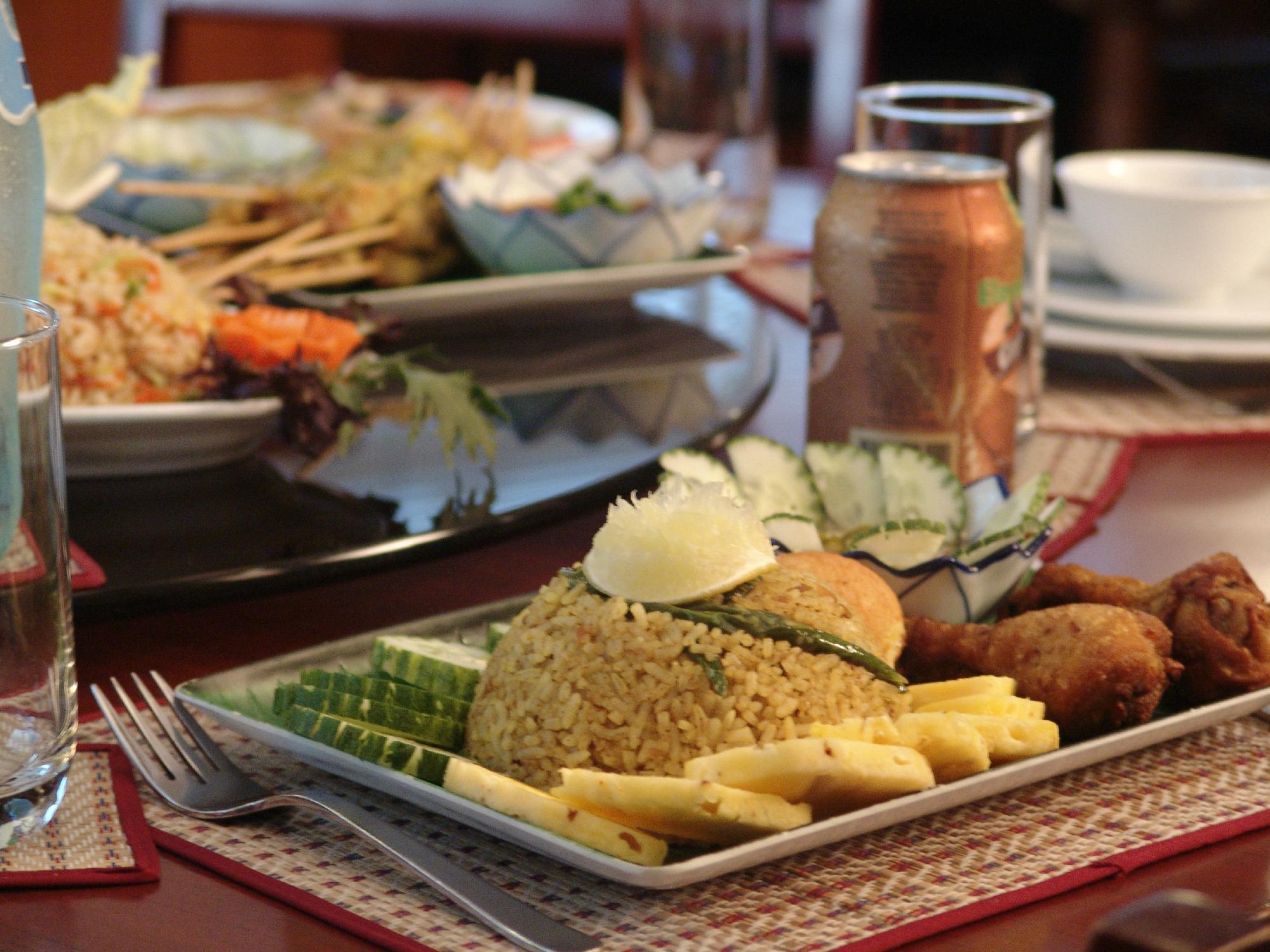
Malé’s culinary scene beautifully captures the essence of the Maldives, blending local traditions with global flavors. The cuisine, known as Dhivehi food, is centered around fresh seafood, coconut, and rice — offering a true taste of island life.
Popular Traditional Dishes:
- Mas Huni – a breakfast staple made with tuna, coconut, onion, and chili, usually served with roshi (flatbread).
- Garudhiya – a flavorful fish soup served with rice, lime, chili, and onions.
- Bajiya – a local snack similar to samosas, filled with fish and coconut.
- Fihunu Mas – grilled fish marinated with Maldivian spices.
Local Dining Experience:
- Visit small Sai Hotaa (tea shops) where locals gather to enjoy snacks and sweet black tea.
- Explore street food stalls for authentic Maldivian flavors and friendly interactions with locals.
Modern Cafés and Restaurants:
- Seagull Café House – famous for its seafood dishes and ice cream.
- Shell Beans Café – a trendy spot by the harbor, perfect for coffee and brunch.
- Rooftop eateries offer scenic views of the ocean while serving a mix of local and international cuisine.
Whether you’re enjoying a traditional Maldivian breakfast or dining by the seaside, Malé’s cafés and eateries strike a perfect balance between authenticity, comfort, and island charm.
Shopping & Nightlife in Malé City
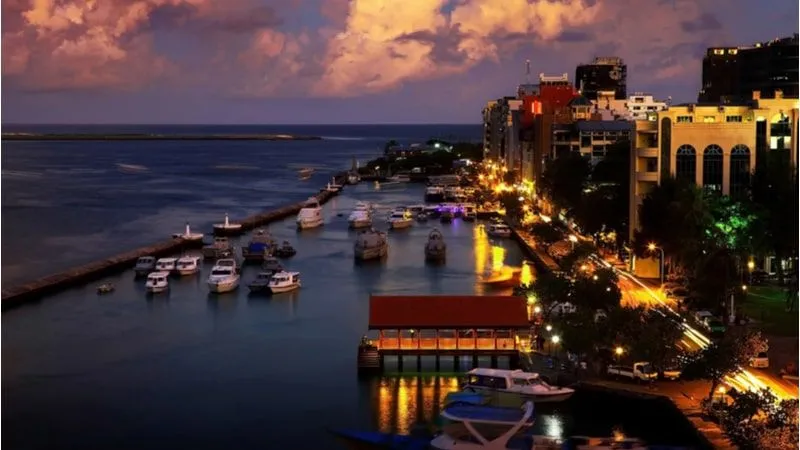
Malé might be small in size, but when it comes to shopping and nightlife, the city offers a surprising blend of local culture and modern charm. The streets are lined with souvenir shops, clothing boutiques, and local markets where travelers can pick up unique Maldivian crafts, natural coconut oil, and vibrant island wear. Popular areas like Majeedhee Magu and Chaandhanee Magu offer authentic shopping experiences, while local vendors are known for their friendly bargaining style.
As evening arrives, Malé comes alive with harborfront cafés, rooftop restaurants, and live music spots. While alcohol is restricted on the main island, visitors can take short speedboat rides to nearby resort islands for night parties and beach bars.
Local Insights:
- Shops typically open from 9 AM to 10 PM, with shorter hours on Fridays.
- Local currency (Maldivian Rufiyaa) is widely used; some shops accept USD.
- Best souvenirs: lacquerware, seashell jewelry, handmade soaps, and sarongs.
- Try rooftop dining near the harbor for beautiful sunset views.
- For nightlife with music and drinks, head to nearby private islands accessible by speedboat.
Transportation & Connectivity in Malé City
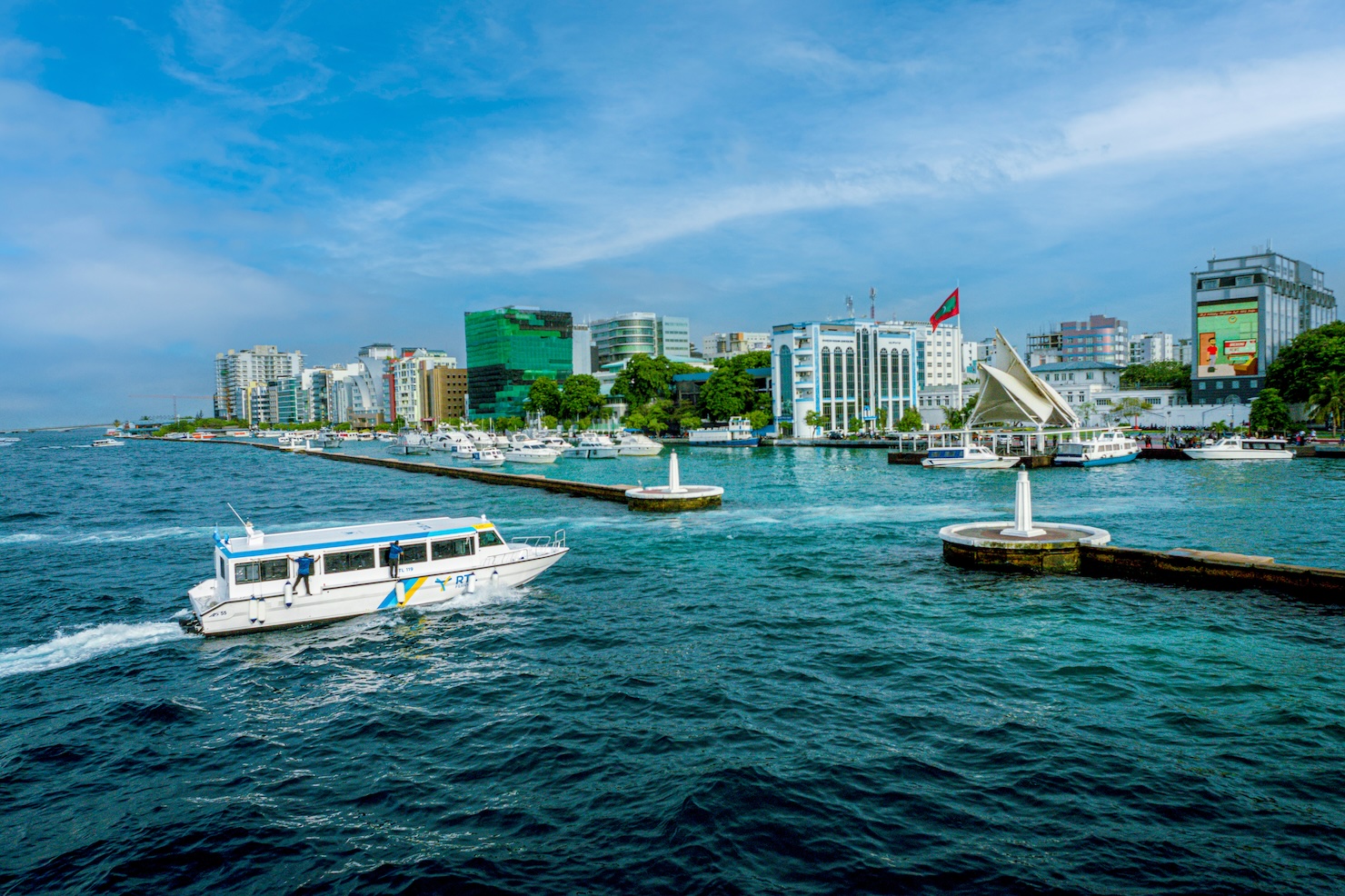
Getting around Malé, Maldives is simple, efficient, and surprisingly well-organized for such a compact island capital. The city’s small size — just about 9 square kilometers — means most attractions are within walking distance. However, several modern transport options make exploring Malé and its nearby islands both convenient and enjoyable.
Local Transportation within Malé
- Walking is the easiest way to get around, as most roads are narrow and well-connected.
- Taxis are widely available and metered, though prices are fixed for short routes within the city.
- Motorbike taxis and bicycles are becoming popular among locals and adventurous visitors.
Inter-Island Connectivity
- Public ferries connect Malé to nearby islands like Hulhumalé, Villingili, and Thilafushi, offering affordable rides every 10–15 minutes.
- Speedboats are available for quicker transfers to private resorts and other inhabited islands.
- Domestic flights operate from Velana International Airport, located on Hulhulé Island, just a short bridge ride away from Malé city.
Note:
- The Sinamalé Bridge connects Malé to Hulhumalé and the airport, open 24/7 for vehicles and pedestrians.
- Ferry terminals close around midnight, so plan inter-island travel accordingly.
- Pre-booking speedboat or seaplane transfers is recommended for resort travelers.
- Local SIM cards and Wi-Fi are easily available for navigation and online bookings.
Best Time to Visit Malé
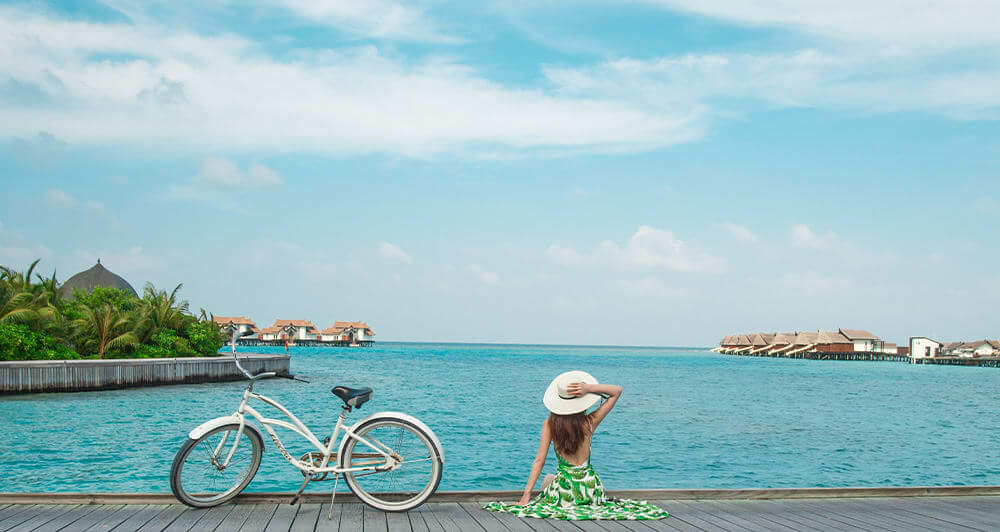
The best time to visit Malé, Maldives is from November to April, when the weather is warm, sunny, and perfect for sightseeing and beach activities. During these months, the skies remain clear, and the sea is calm — ideal for diving, snorkeling, and island hopping. The average temperature hovers around 29–32°C, offering the quintessential tropical experience.
From May to October, the city experiences the southwest monsoon, bringing occasional rain and stronger winds. However, this period also means fewer crowds and better hotel deals, making it appealing for budget-conscious travelers.
Whether you’re exploring cultural landmarks or relaxing at seaside cafés, Malé remains vibrant all year round.
Quick Tips:
- Peak season: November–April (best weather)
- Off-season: May–October (rainy but affordable)
- Water clarity: Best from January–March for diving and snorkeling
Travel Tips & Safety in Malé City
Malé is a safe and friendly city, but it’s important to stay informed and prepared to make your visit comfortable and hassle-free. Here are some important travel and safety tips every visitor should know before exploring the capital:
- Dress conservatively in public areas; revealing clothes should be avoided outside resort islands.
- Alcohol consumption is not allowed in Malé; it’s available only on resort islands or liveaboard cruises.
- Always carry bottled water and avoid drinking tap water.
- Use sunscreen, hats, and sunglasses to protect yourself from the strong tropical sun.
- Keep a small umbrella or raincoat handy during the monsoon season (May–October).
- Exchange currency at authorized counters and carry small cash for taxis or markets.
- Avoid public displays of affection, as they are not culturally appropriate.
- Do not photograph locals, especially women, without permission.
- Stick to authorized taxis or registered ferry services for safe travel.
- Avoid walking alone in isolated areas at night.
- Keep your belongings close in crowded places like markets and ferry terminals.
- Learn basic greetings in Dhivehi — locals appreciate politeness and respect.
- In case of emergencies, contact the police at 119 or medical services at 102.
By staying informed and respectful, travelers can enjoy the true spirit of Malé — a blend of island warmth, modern energy, and Maldivian hospitality that makes every visit both safe and memorable.
Conclusion: Discover the Heart of the Maldives with Book Your Own
Malé City is more than just the gateway to the Maldives — it’s the heartbeat of island life, where history, culture, and the ocean beautifully merge. From the call to prayer echoing across the Grand Friday Mosque to the lively hum of the Local Market, every corner of Malé tells a story of tradition and transformation. Whether you’re strolling along the Sinamalé Bridge, sampling tuna curry at a local café, or exploring the National Museum, this city offers an authentic glimpse into the everyday rhythm of Maldivian life.
At Book Your Own, we help you experience Malé and the Maldives beyond the postcards — with custom itineraries, handpicked stays, and guided city tours designed for every type of traveler. Let us take care of your journey so you can focus on soaking in the turquoise views and vibrant island charm.
Plan your Maldives trip today with Book Your Own — where every journey feels personal.
Get In Touch With Our Travel Expert
